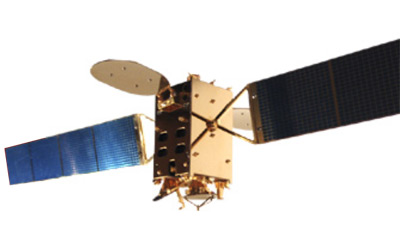Thank you very much for visiting Gunter's Space Page. I hope that this site is useful and informative for you.
If you appreciate the information provided on this site, please consider supporting my work by making a simple and secure donation via PayPal. Please help to run the website and keep everything free of charge. Thank you very much.
VENESAT 1 (Simon Bolivar 1)

VENESAT 1 (Simon Bolivar 1) [CEV]
Under an agreement signed in November 2005, the China Great Wall Industry Corp was contracted to design, manufacture, test and put into orbit the VENESAT-1 for Venezuela.
The satellite will help Venezuela develop its telecommunications, film and TV industries, culture and education. The planned telecommunications satellite will blast off from Xichang Satellite Launch Centre in Southwest China atop a CZ-3B/G2 rocket. The satellite, designed with a mission life of 15 years, was constructed by the China Academy of Space Technology, based on the country's DFH-4 Bus, China's new-generation telecommunications satellite platform. The satellite is also called the "Simon Bolivar Satellite," named after the Caracas-born South American independence hero, the Liberator of Five Republics, according to Tenorio.
The satellite was launched in 2008.
On 13 March 2020 a series of maneuvers left it tumbling in an unusable orbit, with a lowest point 50 km and the highest point 525 km above the geosynchronous arc. Possibly the mishap occured while moving the satellite into a proper graveyard orbit. An issue with the solar arrays has been confirmed.
| Nation: | Venezuela |
|---|---|
| Type / Application: | Communication |
| Operator: | Ministry of Science and Technology of Venezuela |
| Contractors: | CAST |
| Equipment: | 14 C-band, 12 Ku-band and 2 Ka-band transponders |
| Configuration: | DFH-4 Bus |
| Propulsion: | |
| Power: | 2 deployable solar arrays, batteries |
| Lifetime: | 15 years |
| Mass: | 5049 kg |
| Orbit: | GEO |
| Satellite | COSPAR | Date | LS | Launch Vehicle | Remarks | |
|---|---|---|---|---|---|---|
| VENESAT 1 (Simon Bolivar 1) | 2008-055A | 29.10.2008 | Xi LC-2 | CZ-3B/G2 |
References:
- Xinhua report 2.11.2005
